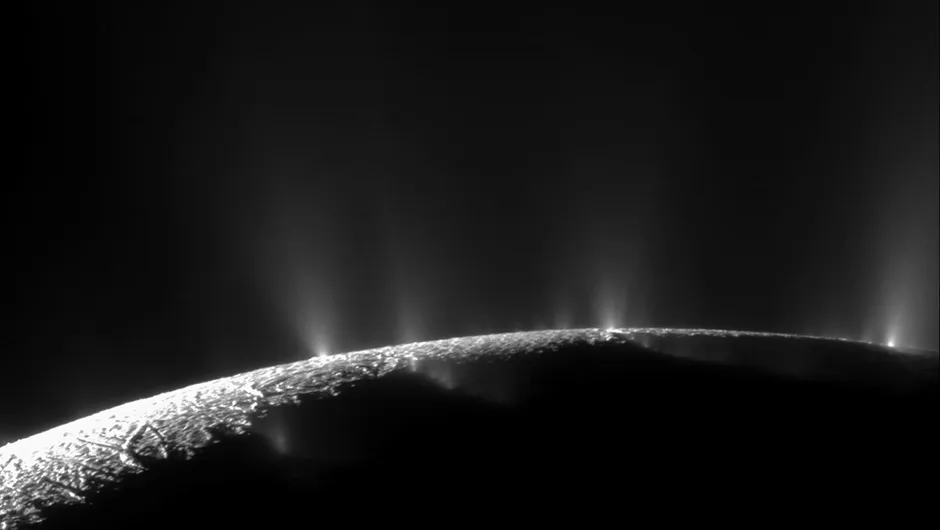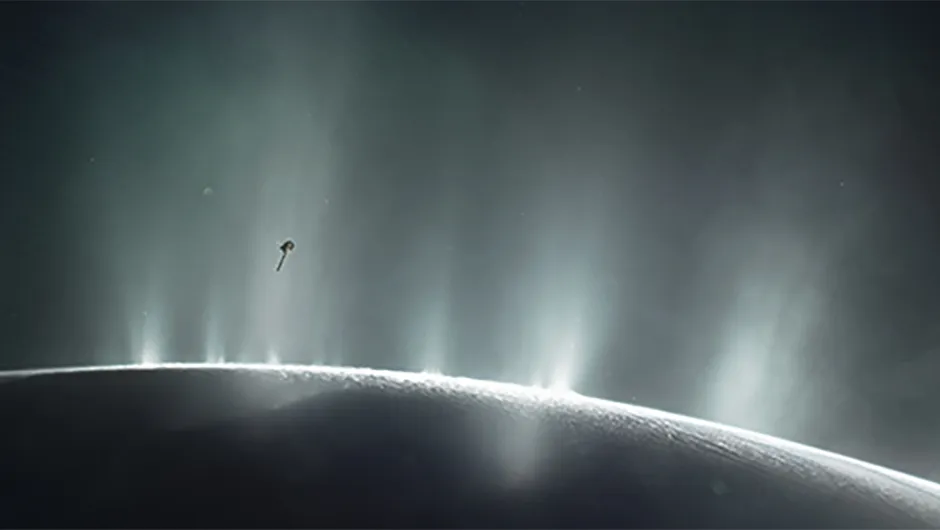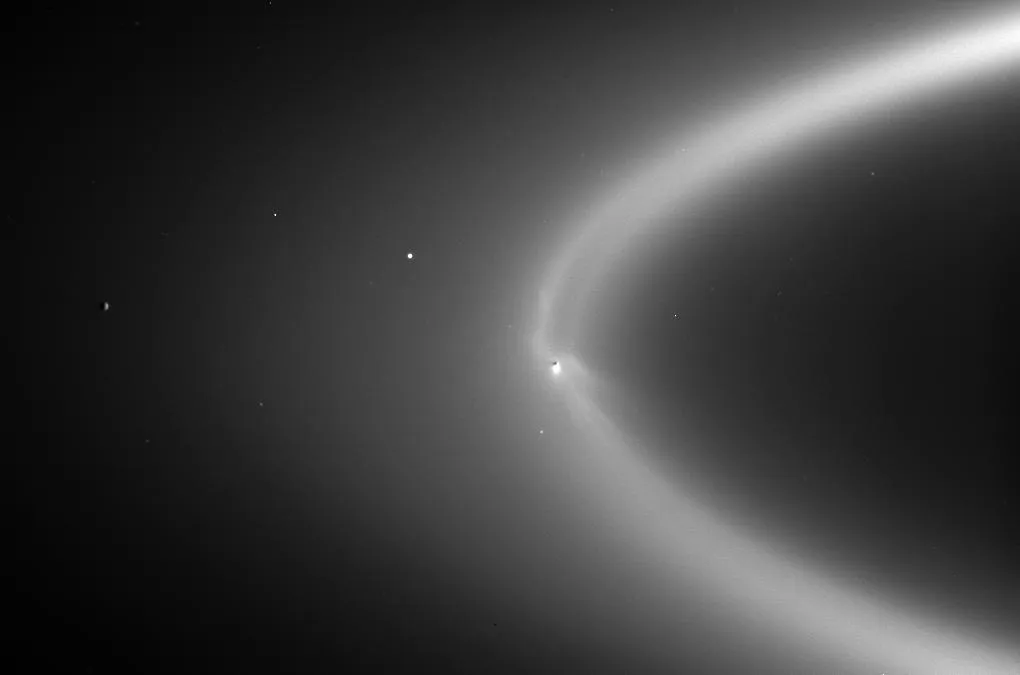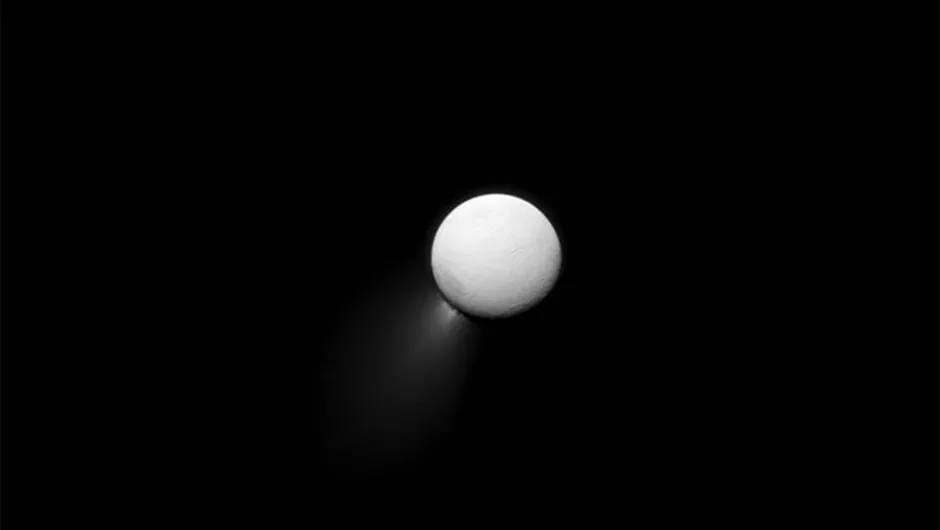Data from NASA's Cassini mission has revealed a key building block for life in the subsurface ocean of Saturn's icy moon Enceladus.
Enceladus is known for its energetic geysers, as water from the ocean beneath the moon's icy crust erupts and spews out material into space.
Phosphorus, an essential chemical ingredient for life as we know it, has now been discovered inside salt-rich ice grains ejected by one of Enceladus's plumes.

The Cassini mission studied Saturn and its icy moons from 2004 - 2017, before making a controlled descent into Saturn's atmosphere, where the spacecraft was purposely destroyed.
The reason it couldn't be left in orbit around Saturn is because some of Saturn's major moons - like Titan and Enceladus - are considered to have prime conditions that could support the emergence of life.
Not wanting to risk contamination, NASA scientists decided to end the mission by destroying the Cassini spacecraft.
One of the key bodies in the search for signs of life within our Solar System is Enceladus, due to the liquid water that exists beneath its frozen exterior.
As we know water is a key ingredient for life on Earth, Enceladus's liquid subsurface ocean makes it a prime target.
During its mission, the Cassini spacecraft made several dives through plumes erupting from deep inside Enceladus and found the moon's ice grains contain a wealth of minerals and organic compounds that are associated with life as we know it.

Now, scientists studying Cassini data have discovered phosphorus, which is a building block for DNA and is found in the bones of mammals, cell membranes and plankton in our oceans.
"We previously found that Enceladus’ ocean is rich in a variety of organic compounds," says Frank Postberg of the Freie Universität Berlin, Germany, who led the new study, which has been published in the journal Nature.
"But now, this new result reveals the clear chemical signature of substantial amounts of phosphorus salts inside icy particles ejected into space by the small moon’s plume. It’s the first time this essential element has been discovered in an ocean beyond Earth."
Finding the ingredients for life

To make the discovery, the team studied Cassini data: specifically that collected by the spacecraft's Cosmic Dust Analyzer instrument when it sampled particles of ice from Enceladus found in Saturn's E ring.
They found high concentrations of sodium phosphates – molecules of chemically bound sodium, oxygen, hydrogen, and phosphorus – inside some ice grains.
Lab tests found that Enceladus’s ocean contains phosphorus in concentrations of at least 100 times that of Earth's oceans.

"High phosphate concentrations are a result of interactions between carbonate-rich liquid water and rocky minerals on Enceladus’ ocean floor and may also occur on a number of other ocean worlds," says co-investigator Christopher Glein of the Southwest Research Institute in San Antonio, Texas.
"This key ingredient could be abundant enough to potentially support life in Enceladus’ ocean; this is a stunning discovery for astrobiology."
However, the study authors are keen for caution when interpreting these results.
"Having the ingredients is necessary, but they may not be sufficient for an extraterrestrial environment to host life," says Glein.
"Whether life could have originated in Enceladus’ ocean remains an open question."
Read more about this story at jpl.nasa.gov/news/nasa-cassini-data-reveals-building-block-for-life-in-enceladus-ocean.
Read the full paper at www.nature.com/articles/s41586-023-05987-9
